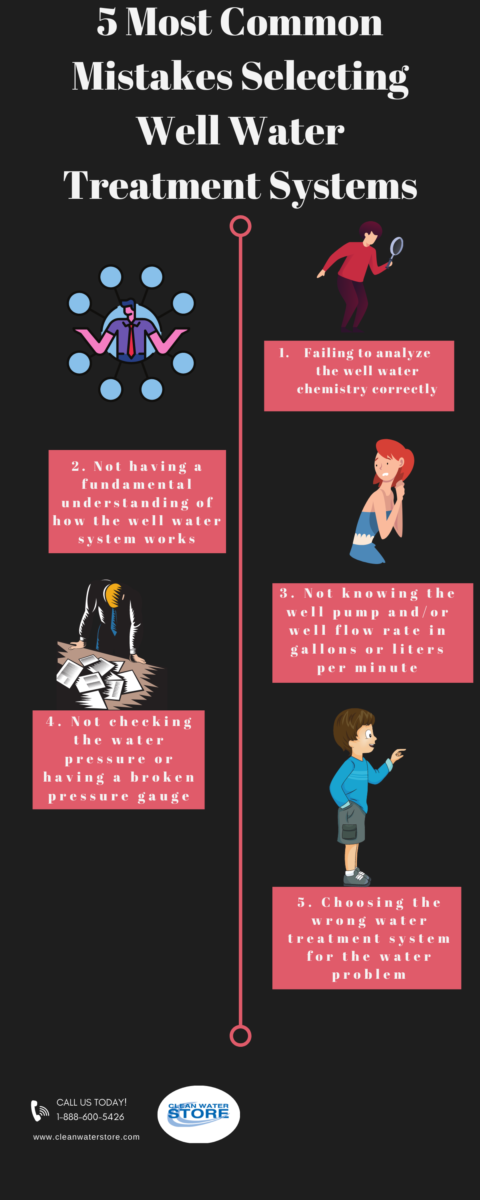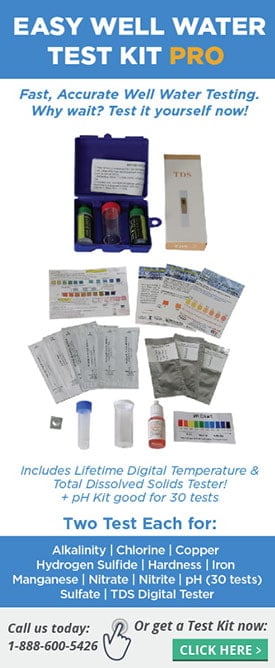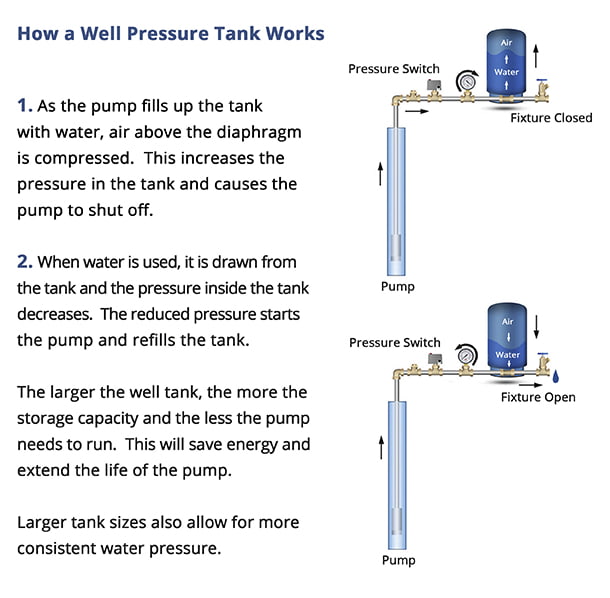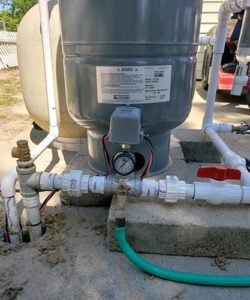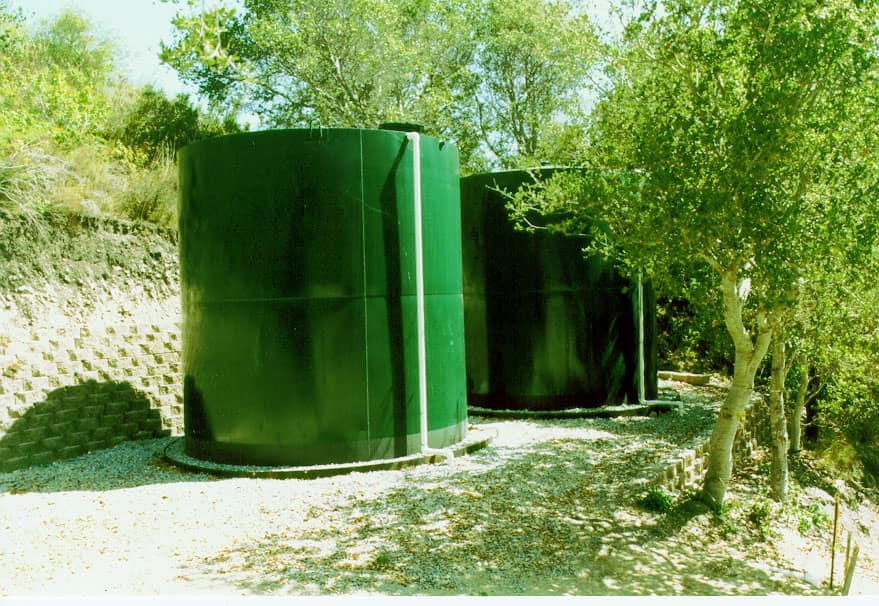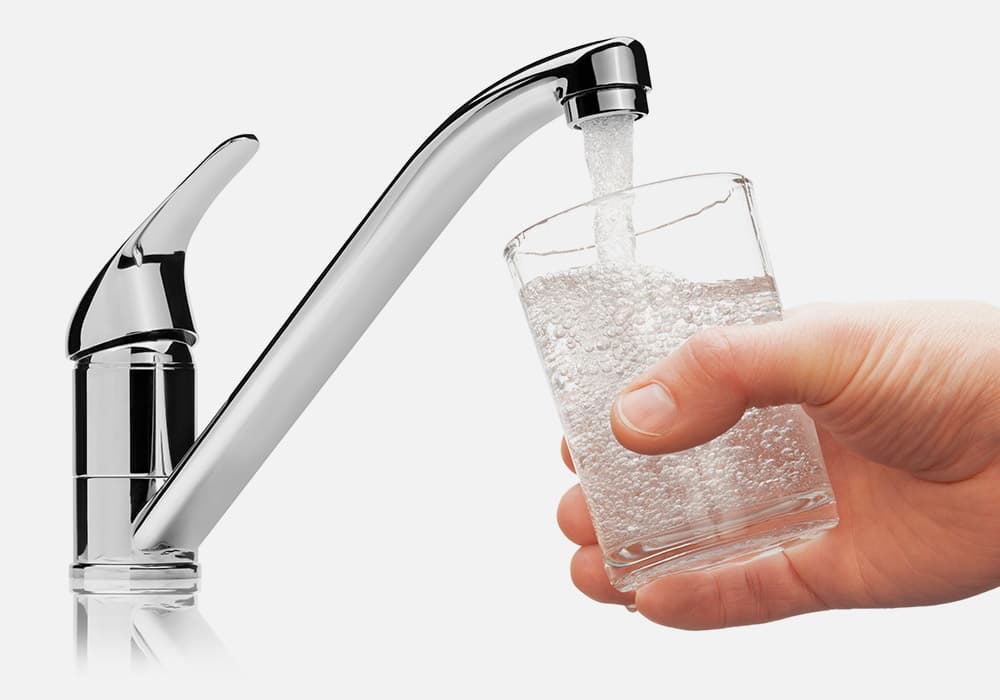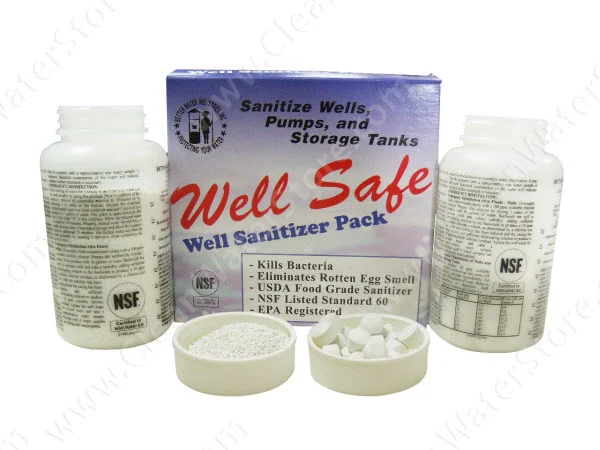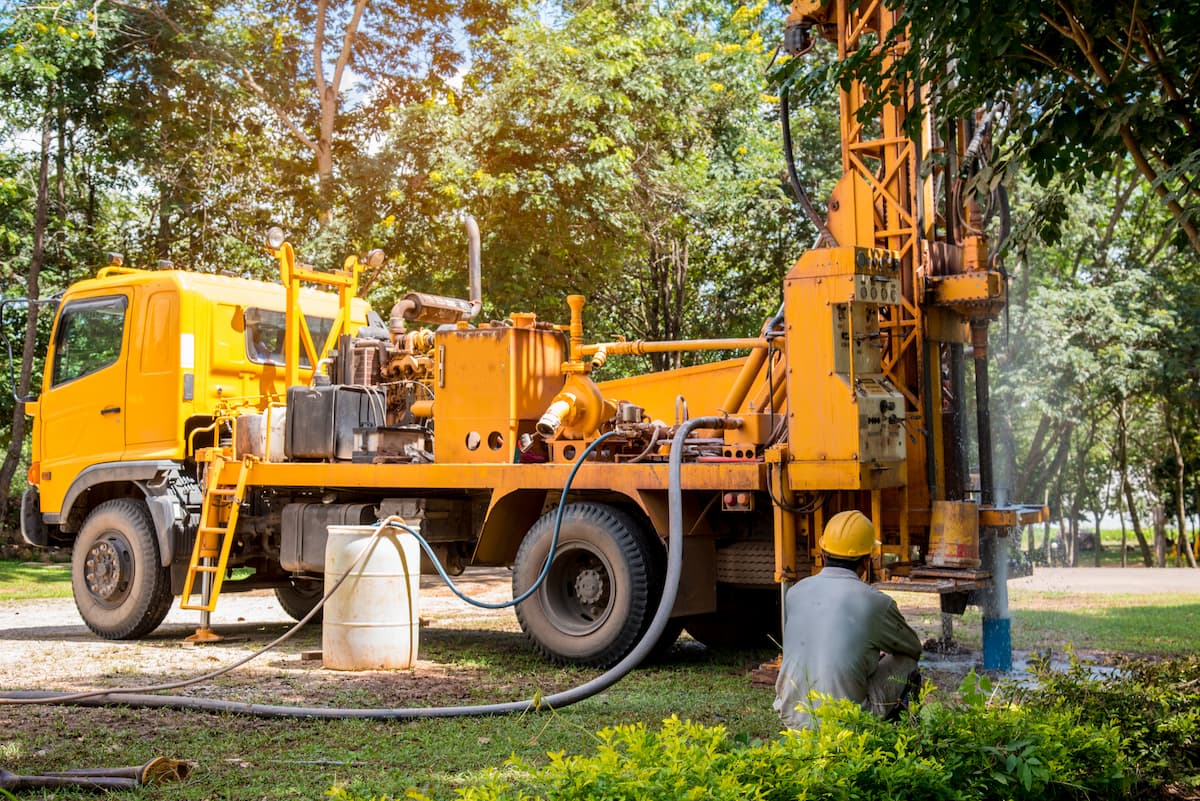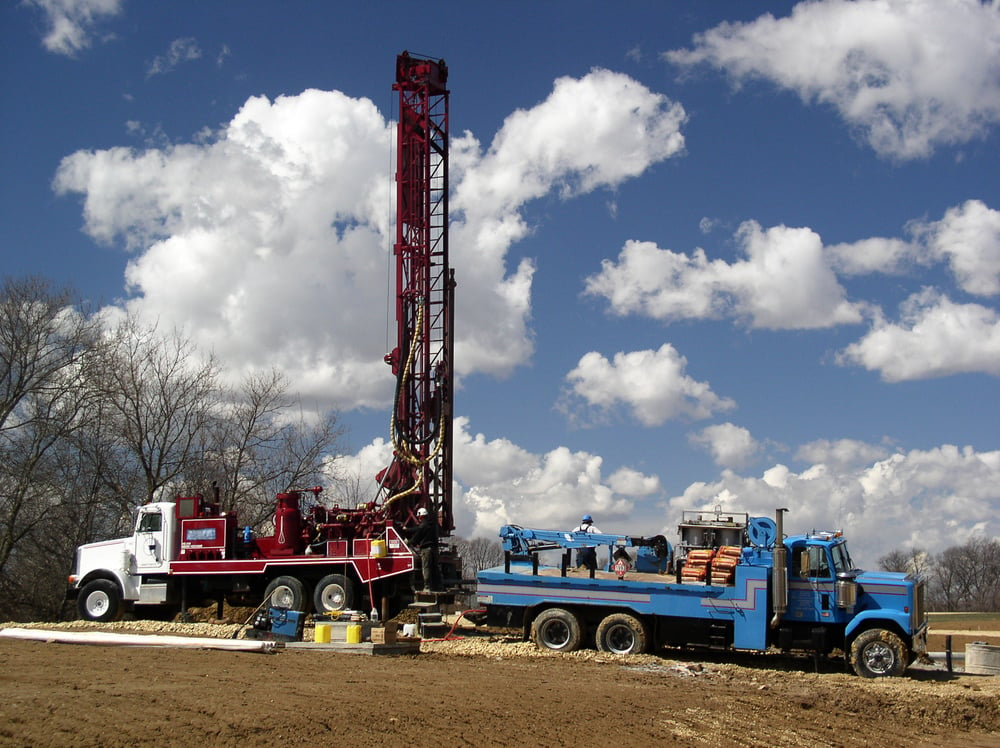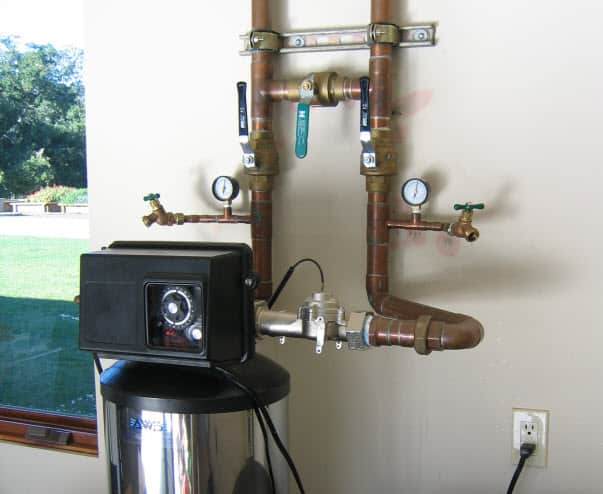5 Most Common Mistakes Selecting Well Water Treatment Systems
5 Most Common Mistakes When Selecting a Well Water Filtration System
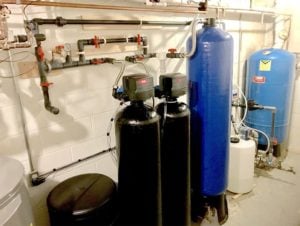
Over the last 30 years, we have worked on thousands of well water treatment installations or systems.
Unfortunately, by the time many of our customers work with us, they are installing their 2nd or 3rd well water treatment system after having problems with the water filtration system that they had before.
After some time, we realized that many homeowners make five common mistakes when choosing well water treatment.
Selecting the right home water filter system can help you avoid these problems, with little help and little time and effort.
The Top 5 Mistakes Include:
- Failing to analyze the well water chemistry correctly. It is crucial to understand the filtration process when analyzing well water chemistry to ensure the effectiveness of the water purification system.
- Not having a fundamental understanding of how the well water system works
- Not knowing the well pump and well flow rate in gallons or liters per minute, which impacts the water flow and overall system performance
- Not checking the water pressure or having a broken pressure gauge
- Choosing the wrong water treatment system for the water problem
Water Taken For Granted
Many of us grew up in an urban area with safe, treated city water and later relocated to the countryside. We may never have considered the origin or quality of water, which we took for granted to be abundant and safe.
After purchasing a home in the country on a private well, many of our customers have encountered unpalatable or dangerous water for the first time. The well water might be rusty, full of sediment, possess a bad odor, or perhaps contain harmful bacteria that induce sickness.
Fortunately, there are many different water treatment systems in the marketplace that can fix these issues. Unfortunately, quite a few water treatment vendors, retail outlets, or big box stores often have only a few systems supposed to match all situations, yielding poor results and frequent repairs and maintenance.
One-size-fits-all and “set it and forget it” are all too common in sales claims. Finding the best well water filtration system depends on a good understanding of your well water. Choosing the right home filtration system involves considering filter lifespan, replacement costs, and the flow rate for optimal performance. A comprehensive house water filter system can ensure clean and healthy water from every tap in your home.
1. Understanding Well Water Contaminants
Well water contaminants can pose serious health risks to individuals and families relying on private wells for their drinking water. Common contaminants found in well water include bacteria, viruses, nitrates, heavy metals, and pesticides. These harmful substances can enter the groundwater through various sources, such as agricultural runoff, septic systems, and industrial waste. Regular water testing is crucial to identify the presence and levels of contaminants in well water. Understanding the types of contaminants present in well water is essential to selecting the right water filter system to ensure safe and clean drinking water.
2. Water Chemistry is Vital in Choosing the Best Well Water Filtration System for The Job
Almost all water treatment systems have certain ranges or conditions in which they perform. One example is well water, which is naturally acidic and, at the same time, has iron present. A lot of iron filtration systems cannot take away iron if the water is acidic, and so to begin, the water has to be treated to counteract the acidity in the water. A sediment filter can play a crucial role in this process by preventing clogging and removing contaminants, ensuring the system's optimal performance.
It is important to select house water filters that can handle specific water chemistry issues to ensure effective filtration throughout the entire home.
Knowing which parameters to analyze is important. When the well is located near gasoline stations, industrial sites, or close to an agricultural area where many chemical substances are being used, the water should be analyzed annually for various chemical contaminants to make sure the water remains safe and secure.
Suppose there are septic tanks or livestock in the region, such as cattle or horses. A bacteria test is recommended. General mineral testing is usually recommended for many aesthetic water quality problems, including bad tastes, odors, or staining.
This may include iron, manganese, total dissolved solids, pH, calcium hardness, alkalinity, and turbidity. Extra analysis can consist of arsenic, nitrate, sulfate, chloride, sodium, and metals such as lead.
A good water analysis is vital before choosing a system. Without first knowing exactly what is present in the water, choosing a tailored approach is not advised.
3. Understanding How Well Water Pumping Systems Work
Most wells pump water from the earth automatically using a submersible pump. If the well is shallow, a jet pump located on top of the ground level draws water from the well to create water pressure for the household.
Some well water treatment systems have a large holding tank to hold the actual water before being pumped again to the household. Many other well water filtration systems are gravity-fed and employ gravity to produce water pressure for the dwelling.
Understanding the basics of how the well water system performs is essential when selecting a water treatment system. The treatment method’s style could adversely affect the water pressure and flow rate within the home. It is crucial to consider the entire house system to ensure compatibility and efficiency. Whole-house water filters can provide consistent water quality throughout the home by being installed at the main water line and reducing various contaminants.
For example, when the well uses a pressure tank, a treatment system must be set up after the tank, not before, to avoid damaging the well pump.
4. How Well Pump Flow Rate Affects Water Treatment Systems
Water wells and well pumps come in different sizes and pump water at different rates. It’s easy to test a well pump to determine the actual flow rate delivered from the pump.
Knowing the flow rate will allow the appropriate size water treatment system to be paired with its preferred flow rate. Nearly all well water filtration systems are self-cleaning and need to have a specific minimum flow rate.
The common problem is using a water treatment system that requires ten gallons per minute, but the existing well pump can only produce 7 gallons per minute. After several weeks, the water treatment system fails to backwash properly and becomes fouled.
The water filter media can seize and solidify, rendering the entire water system impossible to use. Sizing a plan so that the flow rates are met is infinitely important to ensure enough force to move the well water through the media bed to lift the media and allow full cleaning.
Oversized water systems cause loss of pressure, while an undersized system can push media into plumbing downstream of the filter. Choosing the right whole-house system ensures that all points of use, such as showers and kitchen sinks, receive properly filtered water. Therefore, it is crucial to select a house water filter system that matches the well pump's flow rate to maintain optimal performance.
5. Common Problems With Well Water
Well water can be prone to various issues that affect its quality and safety. Some common problems with well water include:
- Excessive Sediment: Sediment can enter the well water through natural sources or human activities, causing cloudiness, odors, and tastes. A sediment filter can help remove these particles, ensuring clearer water.
- Bacteria and Viruses: Well water can be contaminated with bacteria and viruses, posing serious health risks to consumers. Regular testing and the use of ultraviolet light systems can help mitigate these risks.
- Heavy Metals: Heavy metals like lead, mercury, and arsenic can leach into well water from surrounding soil and rocks, causing long-term health problems. Carbon block filters are effective in removing these contaminants.
- Nitrates: Nitrates can enter well water through agricultural runoff, sewage, and other human activities, posing health risks to infants and pregnant women. Specialized filtration systems can reduce nitrate levels.
- Hydrogen Sulfide: Hydrogen sulfide can cause unpleasant odors and tastes in well water and corrode pipes and appliances. A whole-house water filter designed to remove hydrogen sulfide can address this issue.
6. Mistake 3: Overlooking Contaminant Reduction Capability
When selecting a water filtration system, it’s essential to consider its contaminant reduction capability. Overlooking this aspect can lead to inadequate filtration, leaving your water supply vulnerable to contaminants. Look for a system that can remove a wide range of contaminants, including:
- Heavy metals
- Bacteria and viruses
- Nitrates
- Hydrogen sulfide
- Sediment and particulate matter
- Chlorine and chloramines
- Fluoride
- Pharmaceuticals and personal care products (PPCPs)
Choosing a filtration system with comprehensive contaminant reduction capabilities ensures that your water is safe and clean for all household uses.
7. Mistake 4: Not Considering System Type and Footprint
When choosing a water filtration system, it’s crucial to consider the system type and footprint. Different systems have varying space requirements, flow rates, and installation complexities. Consider the following factors:
- System Type: Decide between whole-house systems, under-sink systems, or point-of-use systems based on your needs.
- Footprint: Assess the space requirements for the system and its components to ensure it fits in your designated area.
- Flow Rate: Ensure the system can handle your household’s water demands without compromising water pressure.
- Installation Complexity: Consider the ease of installation and maintenance requirements. Some systems may require professional installation, while others can be installed by homeowners.
By carefully considering these factors, you can select a water filtration system that fits your home’s needs and space constraints.
8. Mistake 5: Not Understanding the Total Cost of Ownership
The total cost of ownership (TCO) of a water filtration system includes the initial purchase price, maintenance costs, replacement filter costs, and energy consumption. Overlooking the TCO can lead to unexpected expenses and financial burdens. Consider the following factors:
- Initial Purchase Price: The upfront cost of the system.
- Maintenance Costs: Regular expenses for filter replacements, cleaning, and repairs.
- Replacement Filter Costs: The frequency and cost of replacing filters can add up over time.
- Energy Consumption: The system’s energy requirements and associated costs, especially for systems that use electricity.
Understanding the TCO helps you make an informed decision and avoid unexpected financial surprises.
9. Key Features to Look for in a Water Filtration System
When selecting a water filtration system, look for the following key features:
- Contaminant Reduction Capability: The system’s ability to remove a wide range of contaminants.
- System Type and Footprint: Space requirements, flow rate, and installation complexity.
- Certifications: Look for certifications from reputable third-party organizations, such as NSF International.
- Maintenance Requirements: Ease of maintenance, filter replacement frequency, and cleaning requirements.
- Energy Efficiency: The system’s energy requirements and associated costs.
- Customer Support: Manufacturer’s warranty, customer service, and technical support.
- Price: The initial purchase price and total cost of ownership.
By considering these key features, you can choose a water filtration system that meets your needs and provides safe, clean water for your home.
10. Benefits of Whole House Water Filtration Systems
Whole house water filtration systems offer numerous benefits for homeowners. These systems provide clean and safe drinking water throughout the home, removing up to 99% of contaminants, including lead, mercury, and pesticides. Whole house filtration systems can also improve the taste and odor of the water, making it more enjoyable to drink. Additionally, these systems can reduce the risk of waterborne illnesses, such as cholera and dysentery. Whole house filtration systems can be more cost-effective than purchasing bottled water or installing individual filters at each faucet. They can also increase the value of a home by providing a safe and healthy water supply.
11. Salt-Free Water Conditioner Options
Salt-free water conditioners are an excellent alternative to traditional water softeners that use salt to remove minerals from the water. These systems employ various technologies, such as magnetic fields or template-assisted crystallization, to alter the properties of the minerals in the water, preventing them from forming scales. Salt-free water conditioners are a popular choice for homeowners who want to avoid the use of salt in their water treatment system. These systems are also beneficial for individuals with sodium-restricted diets or those who want to reduce their environmental impact. Some popular salt-free water conditioner options include the Aquasana EQ-1000 and the Pelican PSE2000.
12. Installation and Maintenance
Installing a whole-house water filtration system requires careful planning and execution. It is recommended to hire a professional plumber to ensure proper installation and to avoid any potential leaks or damage to the system. Regular maintenance is also crucial to ensure the system operates efficiently and effectively. This includes replacing filters, checking the system’s pressure gauge, and inspecting the system’s components for signs of wear and tear. Homeowners should also keep a record of maintenance and repair tasks to ensure the system is properly maintained. By following the manufacturer’s instructions and performing routine maintenance tasks, homeowners can enjoy clean and safe drinking water for years to come.
13. Deciding on the Best Whole House Water Filter for the Job
While some well water treatment systems get rid of several pollutants, no one treatment system can work for every application or water contaminant.
When choosing the best water filtration system for well water, it is important to consider whole-house water filters. Knowing the capability of the water treatment methods being considered, what impurities they extract, precisely what several flow rates they will process, and what water pressures they will operate within is crucial.
Frequently Asked Questions (FAQs)
1. How do I know which well water treatment system is right for my home?
Start by testing your water. A detailed water analysis should include tests for iron, manganese, pH, hardness, total dissolved solids, and potential contaminants like bacteria, arsenic, or nitrates. Without this, it's difficult to select the right system.
2. Why is my previous water filtration system no longer working well?
Many homeowners experience issues when their original systems weren’t properly matched to their water chemistry, flow rate, or pressure. Common mistakes include choosing a “one-size-fits-all” system or installing it in the wrong location in the system.
3. What’s the role of flow rate in water treatment?
Every treatment system requires a minimum flow rate to function correctly—especially systems that self-clean. If your pump can’t supply the proper rate, the system may not backwash properly and can become clogged or damaged.
4. Does water pressure affect which system I choose?
Yes. Most filtration systems slightly reduce water pressure. It’s important to check your current pressure levels so your treatment system doesn’t leave you with weak flow at your taps and showers.
5. What if I don’t understand how my well system works?
Understanding the basics—like whether you have a jet or submersible pump, if your system uses a pressure tank, and where to install the filter—is key to making sure your new system works effectively and doesn’t damage your pump.

